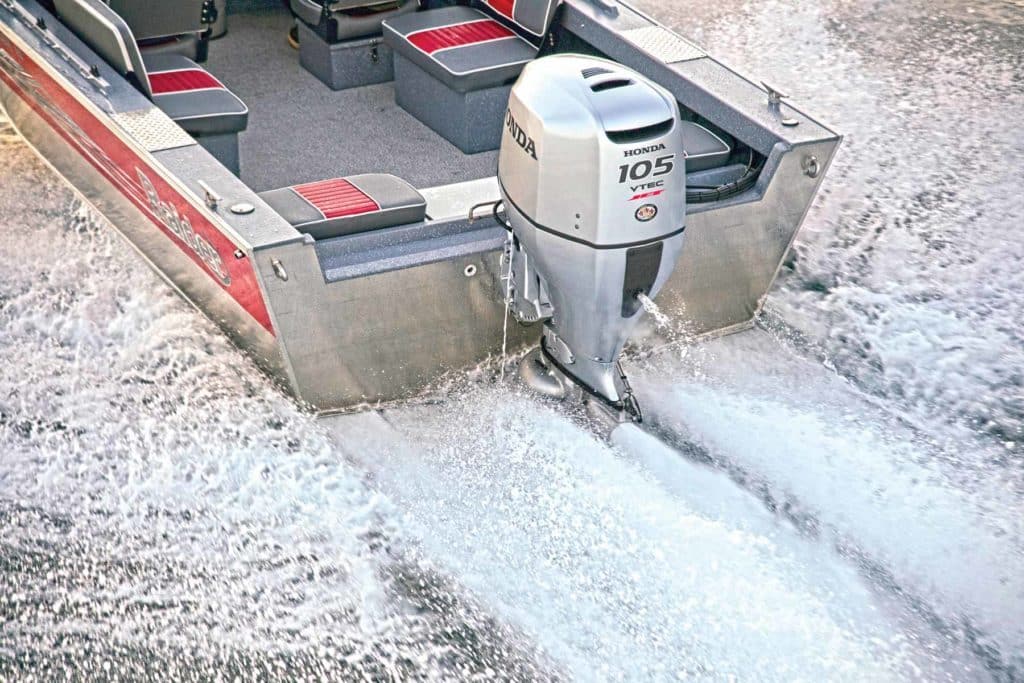
Jet outboards, like these new models from Honda, have long been favored by boaters who run in shallow, rocky rivers. From the Snake River in Idaho to the Susquehanna River in Pennsylvania to the Missouri River in Iowa, jet outboards really shine in clear, weed-free shallows where the chance of striking an obstruction is high, because unlike outboards that turn propellers, the water jet protrudes just an inch or two below the bottom of some boats — and remains above the bottom of so-called tunnel boats. But river-running is not the only use for outboards that employ a jet of water to propel a boat.
“Use by first responders is a great application for jet outboards,” says Alan Simmons, Honda Marine‘s manager of field services and specialty markets. Simmons explained how retrieving a victim from the water may be safer when there is no propeller. That statement prompted me to think of the possibilities for tenders and chase boats used in sail training programs, the paddlecraft rental industry and other waterborne activities.
If you’ve never run a jet, you need to know that they provide great maneuverability — once you learn their quirks. Handling skills learned aboard prop-propelled boats do not all translate directly. You need to anticipate direction changes even more in advance because there are no prop and skeg acting like a rudder in the water. And the design of the boat hull comes into play. “You can use a jet to operate a flat-bottomed boat or one with a bit of V shape, but they won’t work aboard a true deep-V,” Simmons emphasizes.
Simmons also notes differences between props and jets that are maintenance-oriented. The jet pump has a bearing, supporting the vertical drive shaft and impeller, that needs to be lubed after every use, since there’s no gear case containing lube.
Finally, since a jet pump is less efficient than a propeller, you should be aware that jet outboards are labeled with the performance one can expect rather than the actual horsepower. The 40 Honda jet is powered by the BF60 60 hp prop outboard and paired with a jet pump. Similarly, the 65 jet is powered by the BF90 90 hp, and the 105 jet is powered by the BF150.
The new Honda jet outboards feature multiport programmed fuel injection for reliable starts and efficiency, and are NMEA 2000 compatible, so engine data can be displayed on a plotter, fish finder or other networked display aboard. The 40 and 65 models ($11,360 and $13,357, respectively) are available as remote-control models with optional tiller control. The 105 ($19,264) is a remote-controlled engine. All three come in a 25-inch shaft length and feature a freshwater flush port and high-output alternators. Each is covered by the Honda True five-year nondeclining warranty for both powerheads and jet pumps.
These new jet outboards boast innovations and technological advances such as two-stage induction and three-way cooling, as well as proprietary Honda systems such as Blast and VTEC. Visit marine.honda.com for more information.









